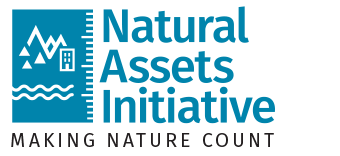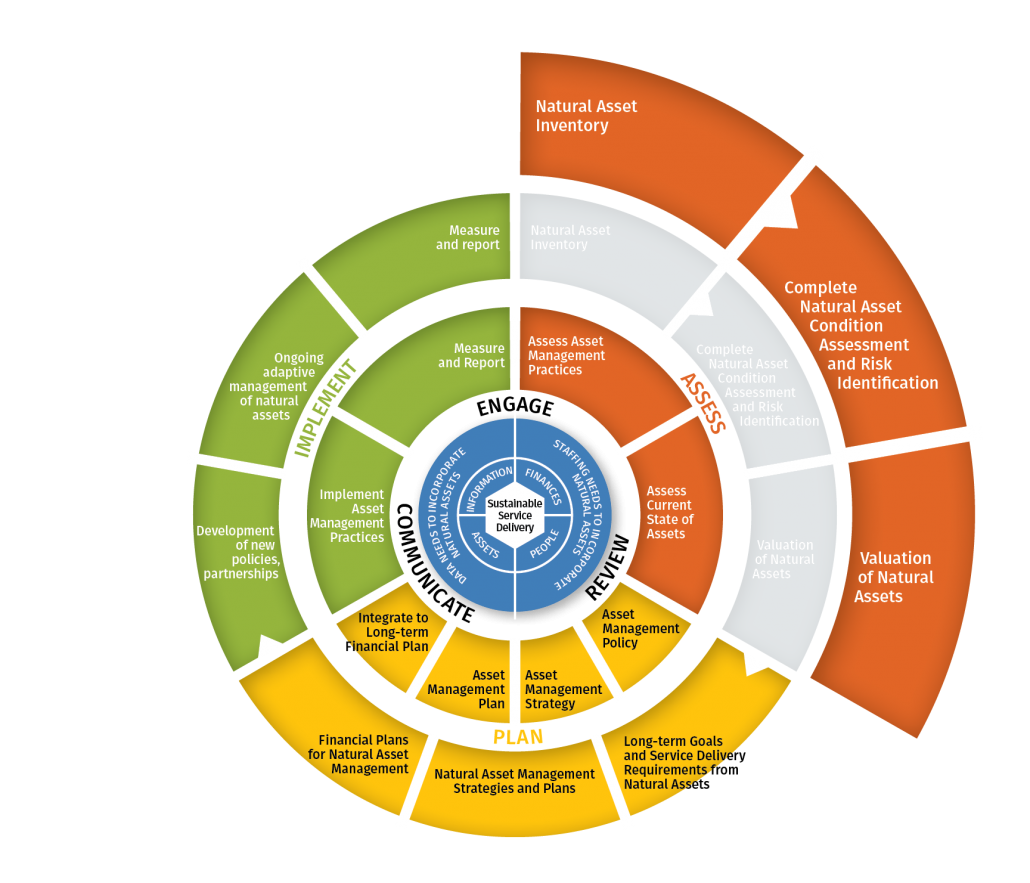Setting the bar: Natural Asset Management Standards in Canada
It’s official: In a first for natural asset management, CSA W218, Specifications for natural asset inventories, has been published as a National Standard of Canada!
The voluntary Standard, published through CSA Group, outlines minimum requirements and provides guidance to complete natural asset inventories. Inventories aggregate information about what natural assets (such as forests or marshland) exist in a given area, the condition they are in, and what risks they face, and are a natural asset management foundation.
CSA W218 includes:
- Data gathering and processing requirements
- Inventory and documentation requirements
- Inventory maintenance and improvement guidance
- Flexible design so it can be applied in any jurisdictional context, and include natural assets in adjacent jurisdictions that provide important services
A natural asset inventory is the first step developing a natural asset management (NAM) strategy — a counterpoint to decades-long business-as-usual approaches in which services are delivered through engineered solutions alone, NAM is a growing, evidence-based practice that ensures nature is included in investment, planning and land-use decisions beyond the traditionally narrow aesthetic or recreational purposes.
By understanding and valuing the services that nature provides — such as flood protection, stormwater management, and erosion mitigation — local governments, who are often on the front lines of climate change, can protect and restore nature for cost-effective and reliable delivery of critical infrastructure services, plus many other benefits that make our communities worth living in.
Who should use this Standard?
Natural asset inventories are part of a holistic asset management approach that include built and natural infrastructure. CSA W218 is designed for asset management practitioners, including Indigenous peoples and local governments, as well as:
- Regional authorities
- Watershed and conservation agencies
- Land managers and others responsible for managing natural assets or ecosystem service delivery
- Financial institutions and those interested in investing in the protection of nature and its services
- Users and producers of environmental, social and governance (ESG) criteria
- Professionals and consultants working in ecosystem services, disaster risk reduction, and nature-based solutions
Why are standards important for NAM?
As of today, more than 120 local governments and partners have worked with the Natural Assets Initiative (NAI) on natural asset management — a great start, but just a fraction of Canada’s nearly 3,600 local governments, to say nothing of other watershed entities. Making NAM mainstream requires standards and “rules for the game” so that an entire market sector emerges. This standard is one important step to ensuring that natural asset inventories are clear, consistent, and comparable from community to community across Canada.
When “natural asset management” means the same thing everywhere, it becomes easier to:
Ensure that quality, practical nature-based solutions are widely accessible (and accepted)
Emerging practices, especially adaptable and data-heavy ones like natura asset management, can be challenging to adopt when existing examples are isolated or vary greatly in their approach. Interdisciplinary and nature-based solutions are particularly challenging as definitions of new concepts are still in development, or become ambiguous by a lack of consistency between technical and administrative interpretations.
Local governments shouldn’t have to reinvent the wheel — standards and norms remove the mystery of how to begin managing natural assets by providing transparent requirements and benchmarks to assess relative quality of any inventory. As well, when neighbouring communities base their actions using the same criteria, it is easier to build effective, shared NAM governance strategies across entire ecosystems (such as at the watershed level).
Additionally, most engineers, geoscientists, financial officers, planners, biologists, and landscape architects are members of professional associations able of influencing norms and methods in many fields. These professional disciplines recognize the importance of working with widely accepted standards and norms that ensure consistency and a high level of service, allowing practitioners to work transparently with local governments and other agencies.
Fund natural infrastructure projects
Let’s face it: public infrastructure, especially natural infrastructure, needs money. Investors, whether public or private, have specific considerations to determine what projects to fund. Public infrastructure funding already faces a number of barriers, in part due to competing priorities, and differing assessment criteria between levels of government.
How can standards help? Put simply:
Good regulatory design and delivery are necessary to ensure sustainable and affordable infrastructure over the life of the asset. Why is this important? Uncertainty concerning the “rules of the game”, or the low quality of those rules, will impact the willingness to invest in, maintain, upgrade and decommission infrastructure and ultimately affects the quality of service delivery. (OECD, 2016).
Use of consistent data points means results can be shared and built upon between communities. Defining how natural assets are measured, inventoried, and scaled can also attract diverse funding and financing firms, who would be able to base funding criteria off official guidelines like the CSA W218 Standard.
Develop education and training opportunities
CSA W218 specifically connects natural asset inventories to broader climate and nature-based solutions, both of which have faced barriers to adoption due to gaps in available knowledge or isolated data. Widely-accepted norms (and those that follow) provide a basis for new training, educational, and professional development options.
Incorporating this nationally accepted standard into curricula will help advance the new field of NAM into mainstream practice by increasing the number of skilled professionals able to carry out the work.
Strengthen natural asset management itself
NAM is an inherently adaptive management cycle; as such, it is continuously being improved on by new findings, research, and project results.
Advancing NAM relies on knowledge sharing and leadership across industries. Being able to “speak the same language” means organizations and experts can more effectively contribute to knowledge co-production. Standards also help to define a starting line — in other words, the established, fundamental knowledge — for NAM from which new approaches and considerations can build on.
Ageing and insufficient infrastructure is a national problem. Coupled with the effects of climate change, it has never been more important for local governments to have tools to build resilient communities. As natural asset management becomes a more broadly-based practice, communities can contribute significantly to a range of climate adaptation, biodiversity and risk management goals, both locally and globally.
Standards are tools — they work when we use them
CSA W218 marks a huge step towards bringing NAM into mainstream asset management frameworks, cementing NAM as a practical solution so others can adopt best practices and adapt more rapidly to climate change.
But a standard only becomes useful, and NAM only becomes mobilized, when the majority use it in practice. As the first of hopefully many standards for natural asset management, NAI encourages feedback and input from practitioners to inform future guidelines and editions to ensure NAM is practical, accessible, and effective.
NAI is proud to have contributed to the development of CSA W218 as the Vice Chair of the W218 Technical Committee. This project was undertaken with the financial support of the Government of Canada through the federal Department of Environment and Climate Change Canada.



